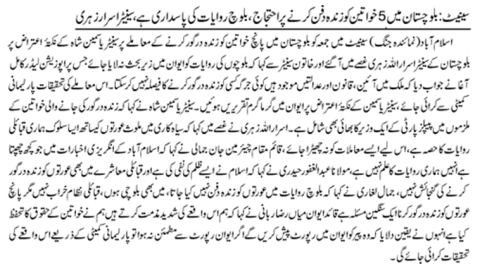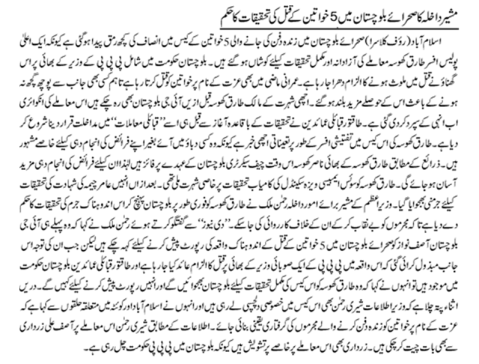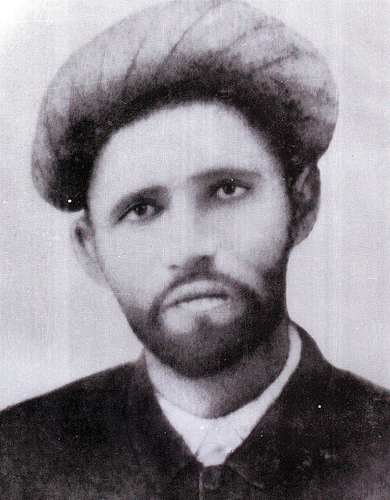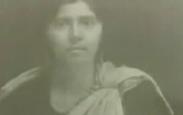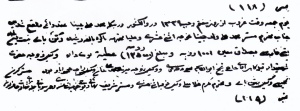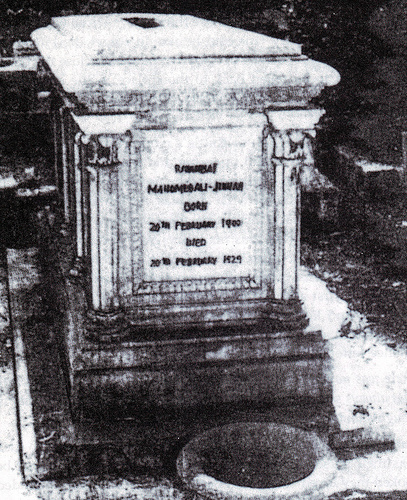Funny News: Zardari will change Pak Economy
September 3, 2008
It couldn’t be funnier than this, Pakistani Media is now trying everything possible to make us believe that Zardari will be able to turn the Pakistani future and he will be the best thing that could ever happen to Pakistani Economy. If you are wondering why then here is the list of reasons:
1. He has valuable corruption experience
2. He grew up from Mr.10% to Mr.100%
 I was watching a movie “The Last King of Scotland” few weeks back which is based on a true story of General Idi Amin of Uganda. There was a scene in which people were shouting and saying that he is the best thing that has ever happened to Uganda. Dr. Nicholas Garrigan gets impressed with this scene and asks Sarah (another Doctor) that it appears the Ugandans really love General. Here is what Sarah says in reply:
I was watching a movie “The Last King of Scotland” few weeks back which is based on a true story of General Idi Amin of Uganda. There was a scene in which people were shouting and saying that he is the best thing that has ever happened to Uganda. Dr. Nicholas Garrigan gets impressed with this scene and asks Sarah (another Doctor) that it appears the Ugandans really love General. Here is what Sarah says in reply:
They loved President Obote even more than him, they love everyone who is in front of them and they shout and say the same things for everyone
Thats the same situation for Pakistanis as well, they have got no brains to think, they just follow what the media tells them, they just live in Today’s News and this is what has happened since many years. When it was Zia-ul-Haq, people called him Mard-e-Momin, then Nawaz Sharif was named as Pakistan’s Robin Hood. Benazir was Daughter of East. Musharraf was praised for his wisdom and economical reforms and now its Zardari …
Do we have any depth guys ? or is it that we can only believe what Geo and Jang tells us …
So why Chief Justice is still out of office ?
August 31, 2008
Zardari, a middle class Landlord from Nawabshah is now enjoying the best days of his life, well anything is possible in Pakistan, guys … so relax if a non-graduate JAAHIL person is going to become your President in few days time.
Question is, you hated Mushraff because he sacked Chief Justice and other Judges, you saw it as a threat to the country’s judicial system. Zardari told you that if Mushraff left the office, the whole problem will be solved automatically so you stood by his side and we saw Mushraff offering his resignation.
Then, Nawaz Sharif broke the power sharing with Zardari by claiming that he is not interested to bring back Chief Justice. Why ??? here is the answer:
Nawaz Sharif wants Chief Justice to come back as they two have a deal that the Judges will make him able to become Prime Minister for 3rd time.
Zardari fears that Chief Justice will cancel the 13b article which gives President all the rights to disolve the Govt if its not functioning well.
Nice game guys … the most interesting part this story is that how sincere our leaders I mean Zardari and Nawaz Sharif are with making our Judicial System as perfect as possible.
5 women died in Balochistan, now lets hate Zardari for this
August 31, 2008
I was talkiyng to one of my friends who was bashing Mushraff like anything, I asked him that what was the list of worst things that Mushraff did and you started hating him in response. He said, he played with Law and Judiciary System. Ok fine, whats next ?
Then he said, do you remember Dr. Shazia’s rape case, the whole responsibility should be put on Mushraff’s shoulders as he was the head of state and one of his own Army officer was involved in this incident.
The worst thing is that the PPP leader is trying to justify this incident and he asks all of us to stay out of it as this is a matter of Balouch Traditions which is above everything else
Hmmm, ok lets agree on that, now here is a new story: 5 women were burried alive in Balouchistan as the Jirga Committee found them guilty of having extra-marital sexual relationships with other men. One of PPP’s minister himself was involve in this Jirga decision and then burrying them alive. I’ve attached a couple of News Items from JANG as proof.
Now, come lets hate PPP and Zardari for this incident on the same level you hated Mushraff for Dr. Shazia’s case … whats your view guys ?
Jinna’s personal life
August 24, 2008
Very few people know about Jinnah’s personal life, I began reading about him and then got interested to know more about his personal life and specially his relation with his daughter. Some of the books that helped me are:
- Jinnah, Pakistan and Islamic Identity By Professor Akbar S Ahmed
- Charisma and Commitment in South Asian History By Roger D. Long, Stanley A. Wolpert
- Jinnah, creator of Pakistan by Hector Bolitho (New Zealand)
Wolpert seem to have done a fair amount of research on this topic and has shared some interesteding insights, lets go through them one by one:
- Jinnah’s Date of Birth: His birth certificate and school records shows his name as Mahomed Ali Jinnah Bhai, and his date of birth was recorded as 20th October, 1875. He later on changed it to 25th December, 1876, not sure what was the reason behind it. According to his real date of birth it makes him a Libra.
- Jinnah’s family: He was eldest among seven siblings born to Mithibai and Jinnahbhai Poonja, he had six siblings brothers Ahmad Ali, Bunde Ali, and Rahmat Ali, and sisters Maryam, Fatima and Shireen. Jinnah’s family belonged to the Ismaili Khoja branch of Shia Islam, though Jinnah later converted to Twelver Shia Islam. Their mother tongue was Gujarati, however, in time they also came to speak Kutchi, Sindhi and English.
- Schooling: Jinnah, a restless student, studied at several schools: at the Sindh-Madrasa-tul-Islam in Karachi; briefly at the Gokal Das Tej Primary School in Bombay; and finally at the Christian Missionary Society High School in Karachi, where, at age sixteen, he passed the matriculation examination of the University of Bombay. Our poular beleif is that he did his matriculation from Sindh-Madrasa-tul-Islam but thats not true.
- Higher Education and becoming a Lawyer: He went to England where he studied Law and worked for Douglas Graham and Company. He worked under Sir Frederick Leigh Croft, who left a lasting impression on Jinnah’s life. Jinnah followed his dressing and communication style and regarded him as one of most favourite personalities in his life. Jinnah then practised as Lawyer in Bombay and soon became one of the most successful lawyers in Bombay.
- Jinnah’s first marriage: He got married to Emibai from Paneli village when he was 16 and Emibai was only 14. The marriage was forced on his by his mother as she was afraid that if he went to England, he might end-up marrying an English girl. They hardly lived together as Jinnah sailed from India soon after his marriage and Emibai died within few weeks after that. How Jinnah felt about that marriage and his new bride is unknow. The marriage took place in Feb-1892 and Jinnah left for England in Nov-1892.
- Practising as Lawyer in Bombay: After coming back from England, he practised as Lawyer in Bombay and became one of the most successful Lawyers in India. He gained particular fame for his skilled handling of the “Caucus Case”. His reputation as a skilled lawyer prompted Indian leader Bal Gangadhar Tilak to hire him as defence counsel for his sedition trial in 1905. Jinnah argued that it was not sedition for an Indian to demand freedom and self-government in his own country, but Tilak received a rigorous term of imprisonment test.
- Jinnah House in Malabar: It was built in 1936 at a then exorbitant price of 2 lakh (200,000) rupees when Jinnah returned to Mumbai from England to take charge of the Muslim League. Now worth around $400 Million the house is the subject of a dispute between India, the government of Pakistan and Jinnah’s daughter. The bungalow is located on Mount Pleasant Road (now Bhausaheb Hirey Marg) in the upmarket Malabar Hill area of South Mumbai. Its opposite neighbour is the residence of the Chief Minister of Maharashtra. The house was British High Commissioner Office in Bombay for many years until Dina Wadia and Pakistani Govt started conflicting over the ownership rights of property.
- Jinnah’s love for his Malabar House: After Indo-Pak partition, Nehru sent Jinnah a letter asking him what should be done to his Malabar House, Jinnah replied “Nehru, allot his house to any foreign consulate, preferably European, as he wished it to be given to a European family who would appreciate the architecture. Nehru acceded to Jinnah’s request and offered him a monthly rent of three thousand rupees. Unfortunately Jinnah died in September 1948 before the deal could be finalised.”
- Rati Bai, Jinnah’s Love: Ruttenbai “Ruttie” Petit (“The Flower of Bombay”) after marriage Maryam Jinnah, “Ruttie” as she was affectionately called was Jinnah second wife. She was born to a Rich Parsi family on 20th Feb, 1900. Ratti, the only duaghter of Sir Dinsha Petit, a close friend of client of Jinnah was considered as the Flower of Bombay, Jinnah was invited to Darjeeling in 1916 by Ratti’s father to spend some Summer days on hill-station. Jinnah and Ratti fell in love with each other just after few meetings and decided to marry ASAP, however Jinnah knew that it wasnt possible until she becomes 18 as per the legal requirements.
- Jinnah’s proposal and meeting with Sir Petit: Jinnah approached Sir Dinshaw with a seemingly abstract question about his views on inter-communal marriages. Sir Dinshaw emphatically expressed his opinion that it would be an ideal solution to inter-communal antagonism. Jinnah could not have hoped for a more favourable response, and immediately asked his friend for his daughter’s hand in marriage.
M. C. Chagla, who was assisting Jinnah at his chambers in those days, recalled later, “Sir Dinshaw was taken aback. He had not realized that his remarks might have serious personal repercussions. He was most indignant, and refused to countenance any such idea which appeared to him absurd and fantastic.”
Jinnah pleaded his case, but to no avail. Not only was this the end of the friendship between the two men, but Sir Dinshaw forbade Ruttie to meet Jinnah as long as she lived under his roof. As she was still a minor, the law was on his side but Ruttie and Jinnah met in secret anyway, and decided to wait out the two years until she attained the age of maturity. - Rati-Jinnah Wedding: Shortly after her eighteenth birthday, Rattanbai converted to Islam and adopted the name Mariam. Two months later, on April 19, 1918, they were married at his house South Court in Bombay. The wedding ring which Jinnah gave Ruttie was a present from the Raja of Mahmudabad. The Raja and a few close friends of Jinnah were the only guests at the wedding, and later the couple spent part of their honeymoon at the Mahmudabad palace in Nainital. The rest of their honeymoon was spent at the Maidens Hotel, a magnificent property just beyond the Red Fort.
- Early days of Rati-Jinnah Marriage: Ruttie and Jinnah made a head-turning couple. Her long hair would be decked in fresh flowers, and she wore vibrant silk and headbands lavish with diamonds, rubies and emeralds. And Jinnah in those days was the epitome of elegance in suits custom-made for him in London. According to most sources, the couple could not have been happier in those early years of their marriage. The only blot on their joy was Ruttie’s ostracism from her family. Sir Dinshaw mourned Ruttie socially even after his granddaughter Dina was born.
- Marriage Failed: Ratti and Jinnah loved each other till the end of their lives but unfortunately their Marriage failed just after few years. Ratti wasnt happy with the fact that Jinnah was working over-time and wasnt able to give time to his family. By mid 1922, Jinnah was becoming involved in Indian Politics, only to make him even busier and the relationship going to the lowest level possible.
- Ratti Shifted to Taj: Ratti, a Cancer Patient shifted to Bombay’s Taj Hotel where she was taken care of by the hotel staff. Kanji, here close friend, continued to be her constant companion. By February 18, 1929 she had become so weak that all she could manage to say to him was a request to look after her cats. Two days later, Ruttie Petit Jinnah died. It was her 29th birthday.
- Ratti’s Death: She was buried on February 22 in Khoja Isnaashari Cemetery, Mazgaon, Bombay according to Muslim rites. Jinnah sat like a statue throughout the funeral but when asked to throw earth on the grave, he broke down and wept. Later, Chagla said, That was the only time when I found Jinnah betraying some shadow of human weakness. It’s not a well publicised fact that as a young student in England it had been one of Jinnah’s dreams to play Romeo at The Globe. It is a strange twist of fate that a love story that started like a fairy tale ended as a haunting tragedy to rival any of Shakespeare’s dramas.

- Ratti’s Letter to Jinnah: Ratti, though seperated, was in constant touch with Jinnah not only when she was in Taj but also when she went to France for advanced treatment of her illness. Here is the copy of one letter that she wrote to Jinnah:
- Dina’s Birth: Dina, the only daughter of Jinnah and Ratti was born on the night between 14th and 15th August, 1919. Jinnah had no idea that Dina’s birth date would become a significant couple of dates for the people of India and Pakistan in 1947 as the history shows. Dina was born as a Premature child and her arrival was unexpected when the couple of was enjoying a movie at a local Theatre in London.
- Dina’s Childhood: Dina spent most of her childhood between London and Bombay and got little opportunity to interact with her father, schooling was done in London most of the times. Wolpert writes that Jinnah defined Dina as her sole comfort during his London’s stay during 1930-33 (an year after Ratti’s death).
- Dina’s Muslim Connection: Jinnah tried raising Dina as a Muslim child and gave her responsibility solely to Fatima Jinnah who tried teaching her Salaat (Muslim Prayers) and Quran. How much Dina practiced these things is an unknow fact.
- Dina-Fatima relations: It was later revealed during an Interview by Dina Wadia that she never enjoyed a good relationship with her aunt Fatima and she saw her as the wall between herself and Jinnah.
- Neville and Dina Wadia: It was 1936-7 when Dina was introduced to Neville (some sources claim it was through a common friend). Neville was born to a Parsi father and Christian mother, his father Sir Ness Wadia (1873-1952) was a well known Textile Industralist in India. Neville was born in Liverpool, England on 22nd August, 1911. Neville always felt as a Parsi at heart and wanted to join the Parsi community but that only became possible on 5th March, 1983 when the chief Parsi Priest Noshir Hormuzdar and his asssociates agreed in front of Parsi Panchayat that Neville should be given right of Novjot “a ceremony to become a formal Parsi”. Neville and his father’s claims to be a true Parsi were disputed by the Parsi Panchyat for many years as Neville’s father had married to a Christian woman. Neville Wadia died on 31st July, 1996.
- Neville’s Career: Neville Wadia was educated at Malvern College and Trinity College, Cambridge. Soon after graduating he married Dina and joined his father’s textile business in 1933, supervising the loading of cotton bales on to trucks. He became company chairman in 1952, retiring 25 years later. During this period cotton exports from India were growing and to help them expand he founded the Cotton Textiles Export Promotion Council, which he headed for 12 years. Wadia also contributed to building new wings and upgrading several hospitals in Bombay founded by his family, and established a commerce college in Pune, 120 miles south of Bombay, along with a host of charitable trusts for Parsees.
- Jinnah’s reaction for Neville Wadia: The relationship between Jinnah and Dina degraded to its lowest level when Dina asked for his permission to marry Neville Wadia, a non-muslim as seen by Jinnah. Wolpert writes that Jinnah asked Dina “there are millions of Muslim boys in India, is he the only one you were waiting for”. Dina replied “there were millions of Muslim girls in India, why did you marry my mother then”. Jinnah replied “but she became a Muslim before marriage”.
- Dina – Neville marriage: Dina went ahead and got married to Neville Wadia against the will of her Father and Jinnah reportedly told all his social circle that he is going to cut all his relations with Dina from that date. This never happened though, as we’ve discovered that Dina was always in touch with Jinnah who had visited her and also they exchanged sever letters with each other.
- Dina – Neville seperation: Dina and Neville Wadia’s marriage lasted for 5 years only and they got seperated in 1943, though the divorce never took place. As we mentioned earlier Dina was in constant tough with her father and specially after her seperation with Neville.
- Nusli Wadia’s Birth: We’ve not been able to find the right date of Birth for Nusli Wadia and the year of Birth is beleived to be either 1944 or 1945 almost an year after the seperation of Mr. and Mrs. Wadia. Nusli is the only son of his parents and has an elder sister as well. In 1971, Neville Wadia made huge breaking news Bombay’s business community when he announced of his intentions to sell up all his Textile related business and settle somewhere abroad (beleived to be New York). This shook the market with some immediate concerns about the huge investments in Wadia Group. However, Nusli Wadia, then 26, had some ambitious ideas to run his family business and with the support of his mother and sister, he took over the Chairmanship of Wadia Group. Jinnah’s relation with his grandson Nusli is unknown.
- 14-15th August, 1947: It is reported that Jinnah asked his daughter on the eve of 14th August, 1947 if she wished to join him in Pakistan, however she did not have any immediate reply as her whole family was in Bombay. The claims are not verfied though.
- Jinnah’s Death: Jinnah died on 9th September, 1948 and Dina Wadia visited Karachi for funneral. She was personally invited by Liaquat Ali Khan who sent a chartered plane to Bombay for Dina Wadia. There is a picture available of Dina Wadia mourning on Jinnah’s funneral. This was Dina’s first ever visit to Pakistan, she returned immediately back to Bombay.


